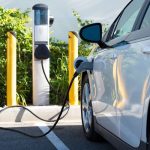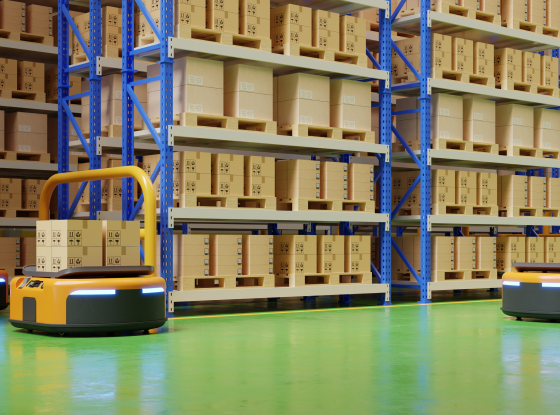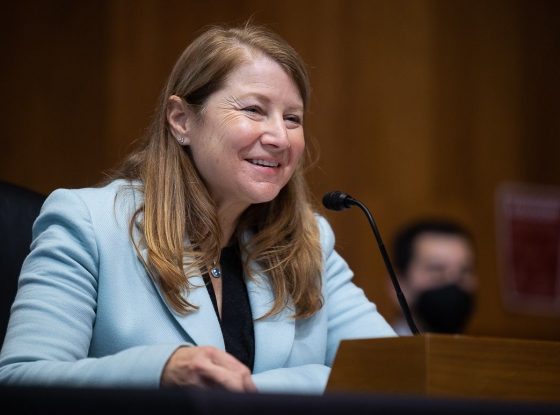Clean energy for ‘everyone and for everything’

UC Irvine’s Clean Energy Institute was founded in 2022 as an umbrella organization to help coordinate and administer sustainability research for several campus interdisciplinary centers. Its first director is Jack Brouwer, a professor of mechanical and aerospace engineering. His substantial background includes leadership roles in UC Irvine’s Advanced Power and Energy Program and the National Fuel Cell Research Center.
With all these responsibilities, he’s a busy man, but he’s taken time to discuss clean energy research at UC Irvine and how that will benefit California, the U.S. and the world.
Brian Bell: There have been several research centers established at UC Irvine in the past half-century around sustainable energy research and development. Why is a new organization under the name Clean Energy Institute needed?
Jack Brouwer: There are several reasons. I think we need to be doing way more than we are today in both the policy world and in research to advance clean energy technology for everyone and for everything. It’s important that everyone gets access to clean energy. Typically, in the state of California, it’s the rich homeowners who have the benefits of clean energy and not the people who live near the ports or the people who live in apartment complexes. They are not benefiting directly from electrification, from the batteries, from the solar and all the subsidies we’ve put into place. I think that we need to do a lot more than we’ve historically been doing. This is why I’m so thankful for the U.S. Department of Energy introducing this idea of hydrogen hubs and a production tax credit that can introduce hydrogen at a lower cost to decarbonize those things that are difficult – like the ports, like the long-haul trucks and like the gas system – so we can deliver clean energy to everyone.
BB: What would you say is the core mission of CEI?
JB: The core mission of CEI from my perspective is to focus on solutions that can provide clean energy for everyone and in every application. We need to transform our current energy systems away from the fossil that they currently convey, for the most part, to clean energy in every one of these applications. We need clean energy for heavy industry like steel, cement and ammonia – these kinds of things. We need it for long-haul trucks and aircraft and for shipping things that are difficult in the transport sector.
In California, we’ve done a good job introducing solar as a primary means of making renewable electricity. We’ve also done a good job of battery energy storage systems and developing our wind resources, although we could do a little bit more with wind than we’re currently doing. And those kinds of things have been helping in certain sectors, such as those using light-duty vehicles. People who have wealth and own their own homes, they’re the ones that are getting the solar and the batteries.
BB: Is there a role for clean energy research in another big sector in California, namely agriculture?
JB: It’s not only the fact that we need to make ammonia from hydrogen and nitrogen in a renewable and more sustainable way, but we also need to power the agricultural and construction equipment. When you start to have these heavy-duty types of applications, many times hydrogen and fuel cells are a better solution than the battery energy solution. I hope that UC Irvine’s investment in this space of clean energy will lead to clean energy for everything and everyone, and that it will be the end of the fossil era.
BB: Do you see a role for yourself and others in the Clean Energy Institute to help shape public policy issues related to sustainable energy?
JB: Definitely. I recently testified before a state senate committee on clean hydrogen. I’m involved in speaking to our legislators, our senators, our assembly people on these kinds of topics.
BB: Are there examples of projects led by UC Irvine researchers in communities surrounding our campus?
JB: In one project funded by the California Energy Commission and U.S. Department of Energy, we had been investigating the introduction of clean energy technologies into a disadvantaged community in Huntington Beach. The people who live there are impacted by several things. They’re located directly adjacent to a waste processing facility and other industries, so they have an industrial corridor right next to their neighborhood. Also, on the other side of their community, they have a freeway. They also happen to be directly downstream from the emissions from the Huntington Beach power plant. They have this confluence of environmental exposure, plus it’s a very densely populated community of mostly apartment buildings constructed in the 1970s. They don’t have good insulation materials or good windows.
More than 75 percent of the residents there are Hispanic, many of whom are first-generation who don’t speak English or who have very low educational achievement. Most of our state policies have led to the ability of homeowners to install solar on their roofs and batteries in their garages, and to buy a Tesla. But unfortunately, that’s not for everybody. It’s not going into that community in Huntington Beach.
And this is what our California Energy Commission-funded effort was about – how we can enable disadvantaged communities to have the same benefits of solar installed in their apartment complexes and to have access to vehicle charging in their communities. We were looking at the feasibility of improving the energy efficiency of the buildings through various technologies by adding insulation and electrifying some of the appliances so that they’d have lower emissions and higher efficiency in the neighborhoods. This included adding heat pumps, adding battery energy storage to the grid there, and putting solar into those neighborhoods.
We designed a whole introduction of this into their community. We applied for a $9 million grant to implement them, but it didn’t get awarded, unfortunately. However, we still are working with that community to try and figure out if there’s another way we can get that funded.
BB: Are there projects in other communities?
JB: In Menifee, Scott Samuelson [professor and founding director of the Advanced Power and Energy Program] is leading an effort that’s introducing the same kind of technology into a new community, so that you can have every home there ready for electrification. This can meet both transportation and stationary demands which homes and communities are not usually designed to do.
We’ve been looking into the possibility of using electric vehicles as a source of energy to feed the grid. Spinning your meter backward with a car battery is not currently allowed. You’re not supposed to get paid for doing things like that. And now maybe this policy should change, right? If we had a lot of cars connected, and they could give energy back, especially if they gave it back at night when the sun’s not shining, this might be a good thing for the state. So, we’re getting involved in the policy world to make changes that might be positive for these kinds of ideas.
BB: You’ve mentioned disadvantaged communities, like those around the Port of Long Beach, the Port of Los Angeles and the 710-freeway corridor heading north from there. There are a lot of communities along that stretch.
JB: That’s right. It’s a major freight corridor where communities are disadvantaged by diesel particulate matter and nitrogen oxide emissions. We have done air quality simulations that look at the differences in atmospheric chemistry resulting from the use of hydrogen fuel cell trucks instead of diesel trucks. We find that ground-level ozone and ground-level particulate matter concentrations in these very freight corridors are dramatically reduced when we use fuel cell trucks instead of diesel trucks. We also find that if we introduce these technologies into ships, it would be beneficial because mostly we have onshore winds.
Research at UC Irvine focuses on the eventuality that there is going to need to be a mix of battery, fuel cell and hydrogen use in the ports for several reasons. One would be for the transportation that will require heavy payload for long distances – these will favor the fuel cell and hydrogen solution. For short distances, batteries may be favored in that.
BB: How will the Clean Energy Institute function in relation to the other sustainable energy research centers on campus?
JB: Some people have referred to CEI as an umbrella organization. With all the affiliated centers and institutes, we share a common administrative function, including pre-award and post-award budgets, and contracts and grants management.
The Clean Energy Institute is interested in many technologies, including battery energy storage. You can see that we have good battery expertise at the Horiba Institute of Mobility and Connectivity. We also have good battery expertise in physics disciplines around UC Irvine, as well as electro-catalysis, which is directly related to not only fuel cells and electrolyzers but also to batteries. We also are interested in everything from thermal energy storage to mechanical energy storage technologies, which are not very common today. But I think they will become more common as we introduce more and more renewable energy throughout the world. We have a good example of that on our campus in our thermal energy storage system, which is pretty novel.
We have a very good track record of engaging with industry. This is increasingly important for even fundamental research. The National Science Foundation almost always asks our investigators to provide industry-support letters or some documentation of why this could make it into a commercial product. Our historical relationship with industry and working with industry through our contracts and grants is something that I’d like to share with those seeking to advance clean energy technologies throughout the campus. We have a nice collaborative spirit here at UC Irvine, more collaborative than I see at other universities.
BB: Do you think we are going to be able to meet our climate goals in the coming years?
JB: If you look at the climate goals and emissions goals that we have here in the state of California and many other states in the U.S. – and in almost every country in Europe, in Australia, in Japan, in Korea. We all have goals to decarbonize and de-pollute by an order of magnitude by 2050. That’s like 25 years from now; it is a very short time in which we need to transform our whole energy infrastructure.
Right now, 20 percent of our energy is coming to us in the form of electricity. We’re probably going to more than double that – maybe 50 percent will have to come to us in the form of electricity. We’re already way behind. We are not investing enough in our transmission and distribution infrastructure on the energy side. We’re going to blow by 2050 and not be able to meet that need to have 50 percent of our energy coming to us as electricity. We’re just not going to make it without massive investments.
And then if you look at the other things that we are doing, we’re delivering more energy today – about 80 percent – in the forms of petroleum, coal and gas. We’ve barely begun to transform those areas. We should have been investing in this 20 years ago and already starting to transform our gas system, starting to transform our gasoline stations and starting to take our coal plants down, and putting something else in their places.
I do think that our policy framework is a reasonable one. It’s a good one. And we should aim to decarbonize by 2050. And even if we only get halfway there by 2050, it’s a good thing we’ve accomplished. I just think that we have insufficient policies and investment so far; we should be doing more. I want to do more of that at the Clean Energy Institute. I want to do those things that will decarbonize and de-pollute everything for everyone. We’ve got to move at a faster pace.
Source : news.uci.edu



